
Johns Hopkins University’s Hopkins Extreme Materials Institute (HEMI) is pleased to announce its collaboration with Corning Incorporated (NYSE:GLW). This effort will enable HEMI and Corning to work together on projects to explore the performance of ceramics and glasses through state-of-the-art experiments and sophisticated computational modeling.
Professors Lori Graham-Brady, KT Ramesh, and Todd Hufnagel of HEMI will be working closely with Corning scientists to investigate fundamental mechanisms related to the mechanical performance of Corning’s precision glass and ceramics materials. The collaboration leverages the deep knowledge of materials performance under extreme conditions provided by HEMI faculty and they expect to be conducting experiments using the cutting-edge resources located at Argonne National Laboratory.
“The caliber of materials research performed within HEMI is quite impressive and we are excited to collaborate with them on these projects,” said Dr. Steven Ogunwumi, research manager at Corning. “We hope these collaborations will lead to a long-term relationship between Corning and HEMI at Johns Hopkins.”
Professor KT Ramesh, Director of HEMI added, “This collaboration with Corning provides us the opportunity to work with an industry leader in precision materials while enhancing our research portfolio. We look forward to seeing the translation of our fundamental research by the leader in the field of ceramics and glass.”
About HEMI
The Hopkins Extreme Materials Institute provides global intellectual leadership to advance the fundamental science associated with materials and structures under extreme conditions or demonstrating extreme performance. HEMI partners with academia, government, and corporate organizations on a wide range of projects, leveraging key strengths across Johns Hopkins – including the Whiting School of Engineering, the Krieger School of Arts & Sciences, and the Applied Physics Laboratory.
About Corning Incorporated
Corning (www.corning.com) is one of the world’s leading innovators in materials science, with a 166-year track record of life-changing inventions. Corning applies its unparalleled expertise in glass science, ceramics science, and optical physics along with its deep manufacturing and engineering capabilities to develop category-defining products that transform industries and enhance people’s lives. Corning succeeds through sustained investment in RD&E, a unique combination of material and process innovation, and deep, trust-based relationships with customers who are global leaders in their industries.
Corning’s capabilities are versatile and synergistic, which allows the company to evolve to meet changing market needs, while also helping customers capture new opportunities in dynamic industries. Today, Corning’s markets include optical communications, mobile consumer electronics, display technology, automotive, and life sciences vessels. Corning’s industry-leading products include damage-resistant cover glass for mobile devices; precision glass for advanced displays; optical fiber, wireless technologies, and connectivity solutions for state-of-the-art communications networks; trusted products to accelerate drug discovery and delivery; and clean-air technologies for cars and trucks.
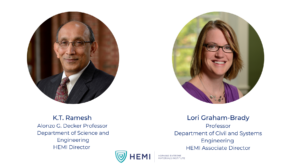



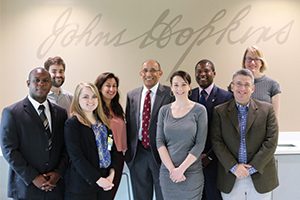
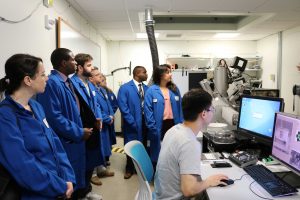
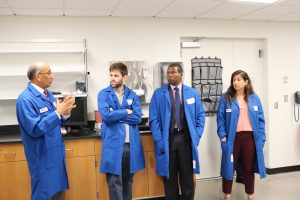
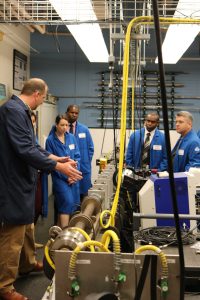
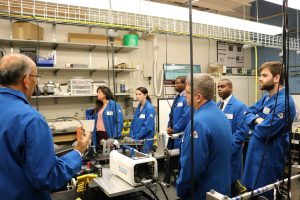
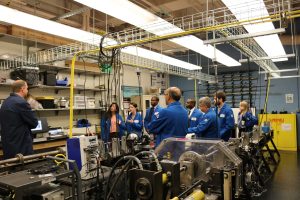
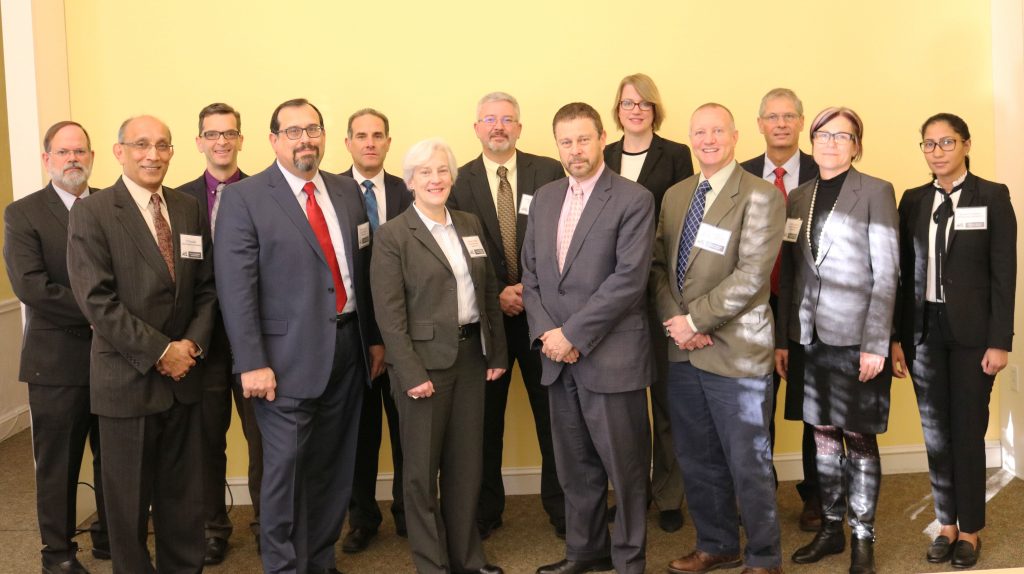 Research Management Board members post with Enterprise for Multiscale Research of Materials key leaders and Dean T.E. Schlesinger of the Johns Hopkins University Whiting School of Engineering prior to the review.
Research Management Board members post with Enterprise for Multiscale Research of Materials key leaders and Dean T.E. Schlesinger of the Johns Hopkins University Whiting School of Engineering prior to the review.

